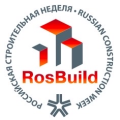Как сообщает маркетинговая компания NPD Solarbuzz, объемы производства поликристаллического кремния, который является основным сырьем для производства солнечных батарей, с начала 2013 года снизились: большинство ведущих заводов этой отрасли загружено менее чем на 70%.
Напомним, что в последние два года цены на поликристаллический кремний на международном рынке падали и достигли рекордно низкого уровня в 15 долларов за килограмм. Невозможность обеспечить сбыт продукции из-за резкого снижения спроса привела к тому, что многие компании законсервировали свои производственные мощности, а многие совсем покинули этот бизнес. Тем не менее, наиболее крупные производители поликремния поддерживали объемы производства на высоком уровне – производственные мощности были загружены на 90% и выше, несмотря на то, что спрос на поликремний уже к середине 2012 года упал на 70% по сравнению с первым кварталом 2011 года.
Как отметил вице-президент NPD Solarbuzz Чарльз Аннис, производители поликремния не торопились снижать объемы производства, так как именно при больших объемах наблюдаются минимальные производственные затраты. Еще большее падение цен в конце 2012 года обусловлено накоплением готовой продукции на складах заводов в Китае – по данным маркетингового исследования, в 2012 году на внутреннем китайском рынке было использовано 188 тысяч тонн поликремния, и еще 262 тысяч тонн к концу года залежалось на складах.







